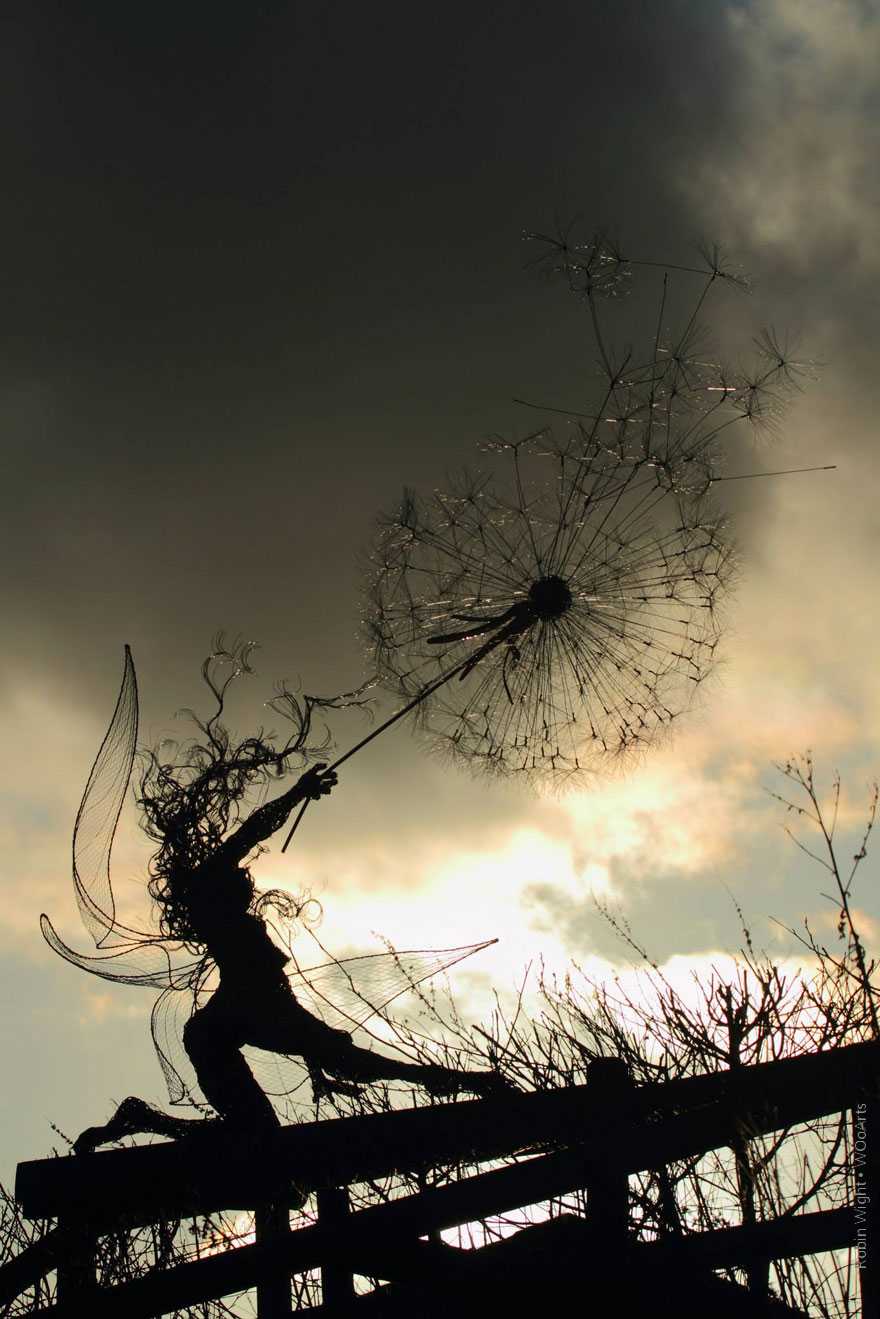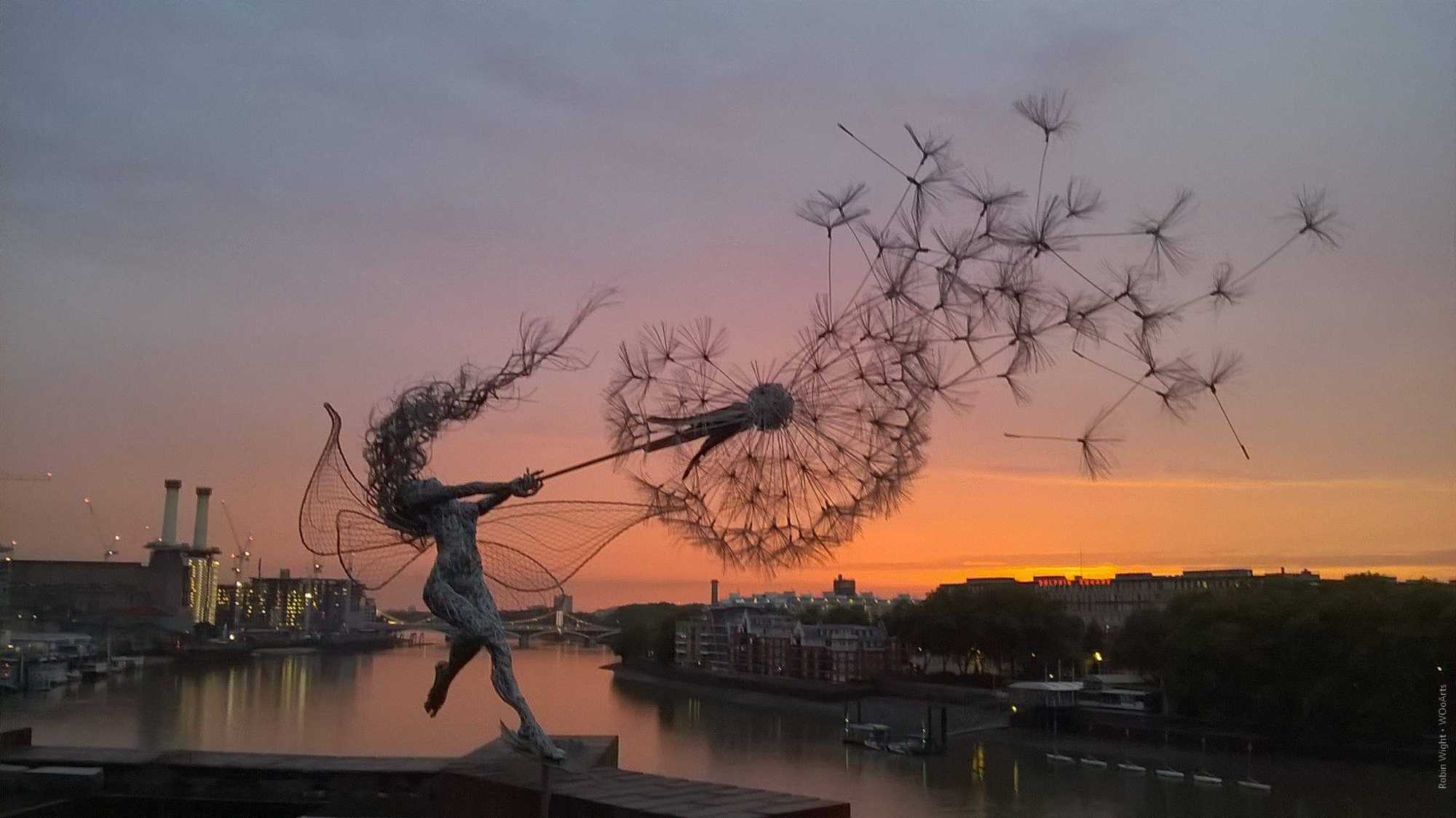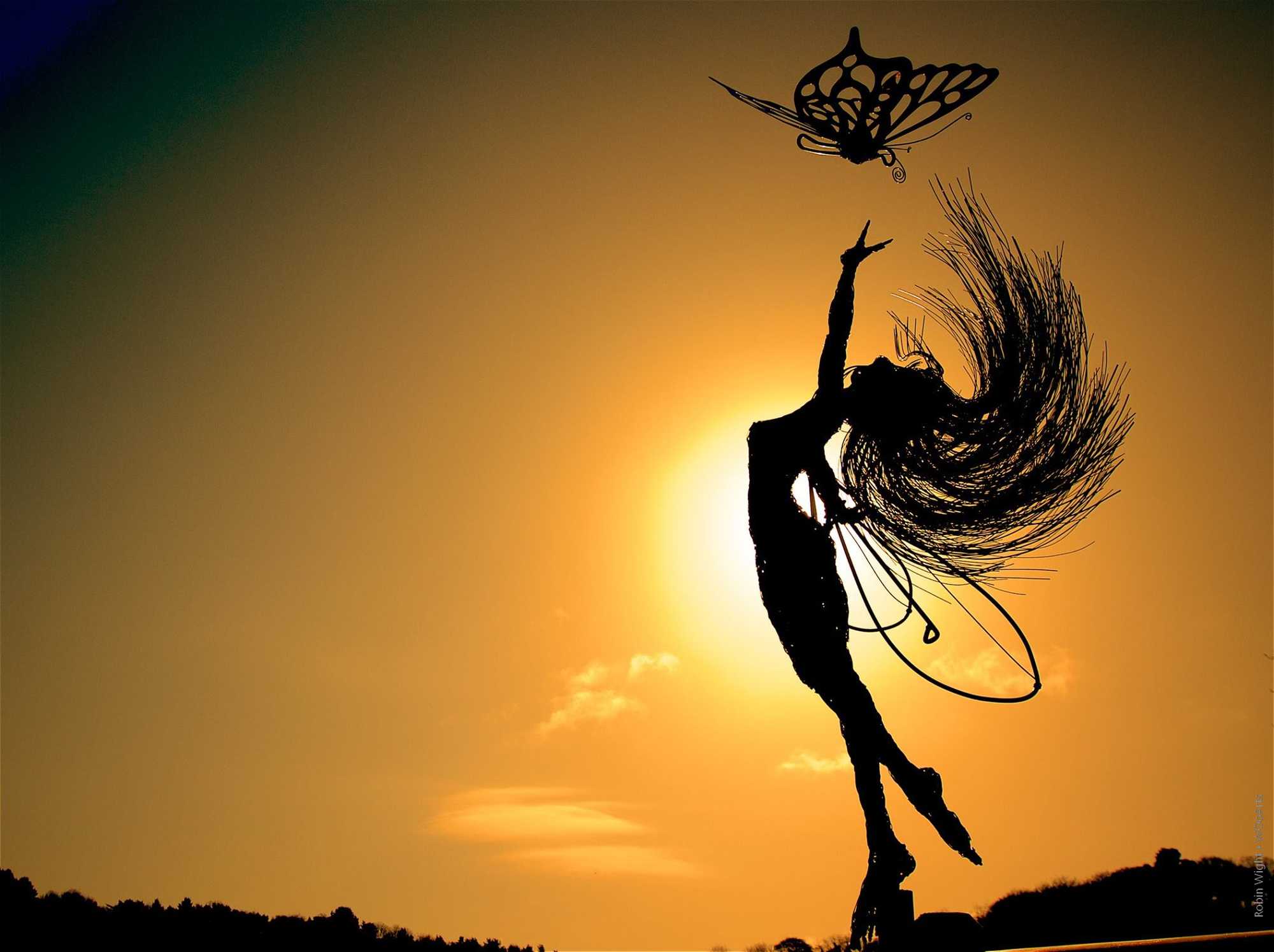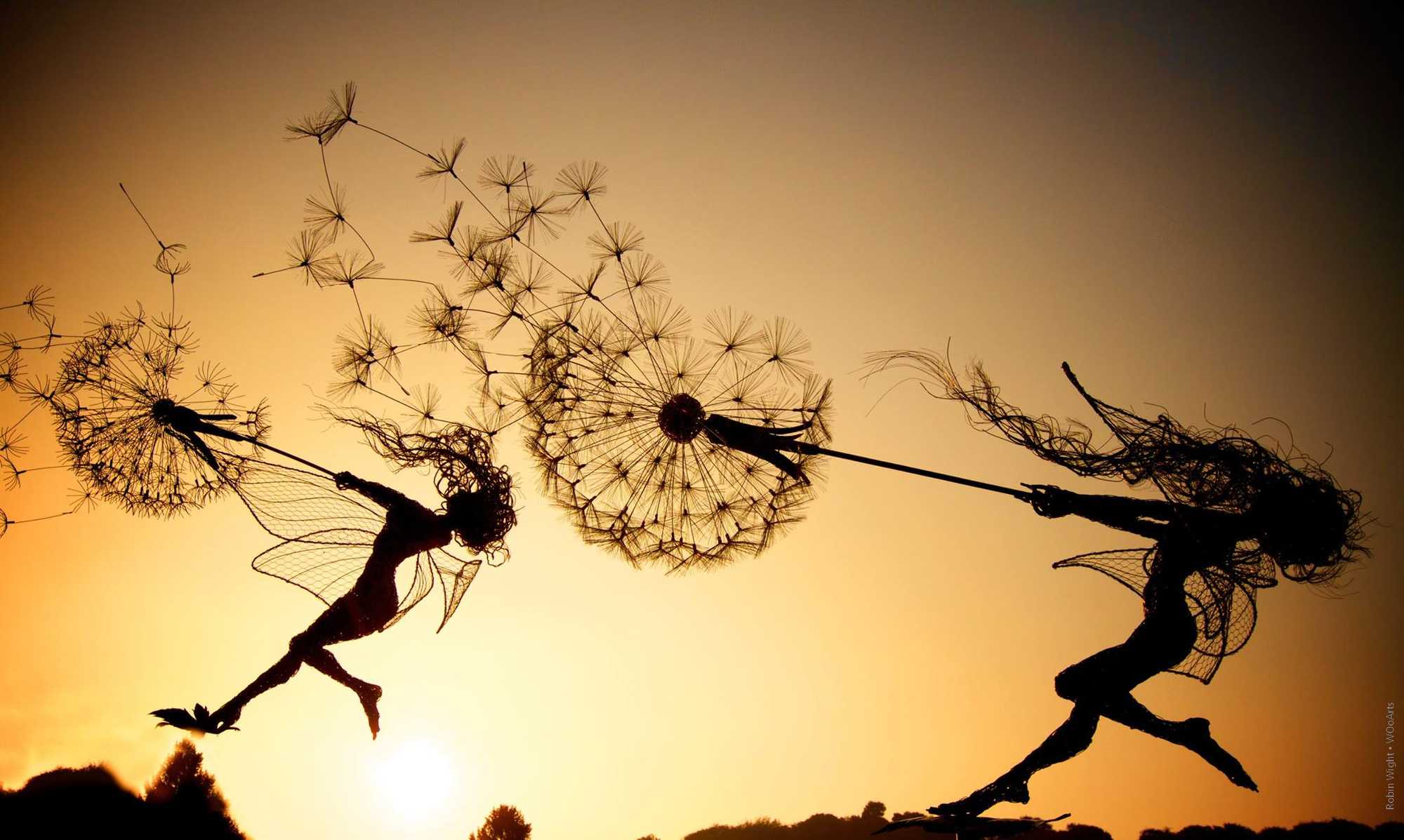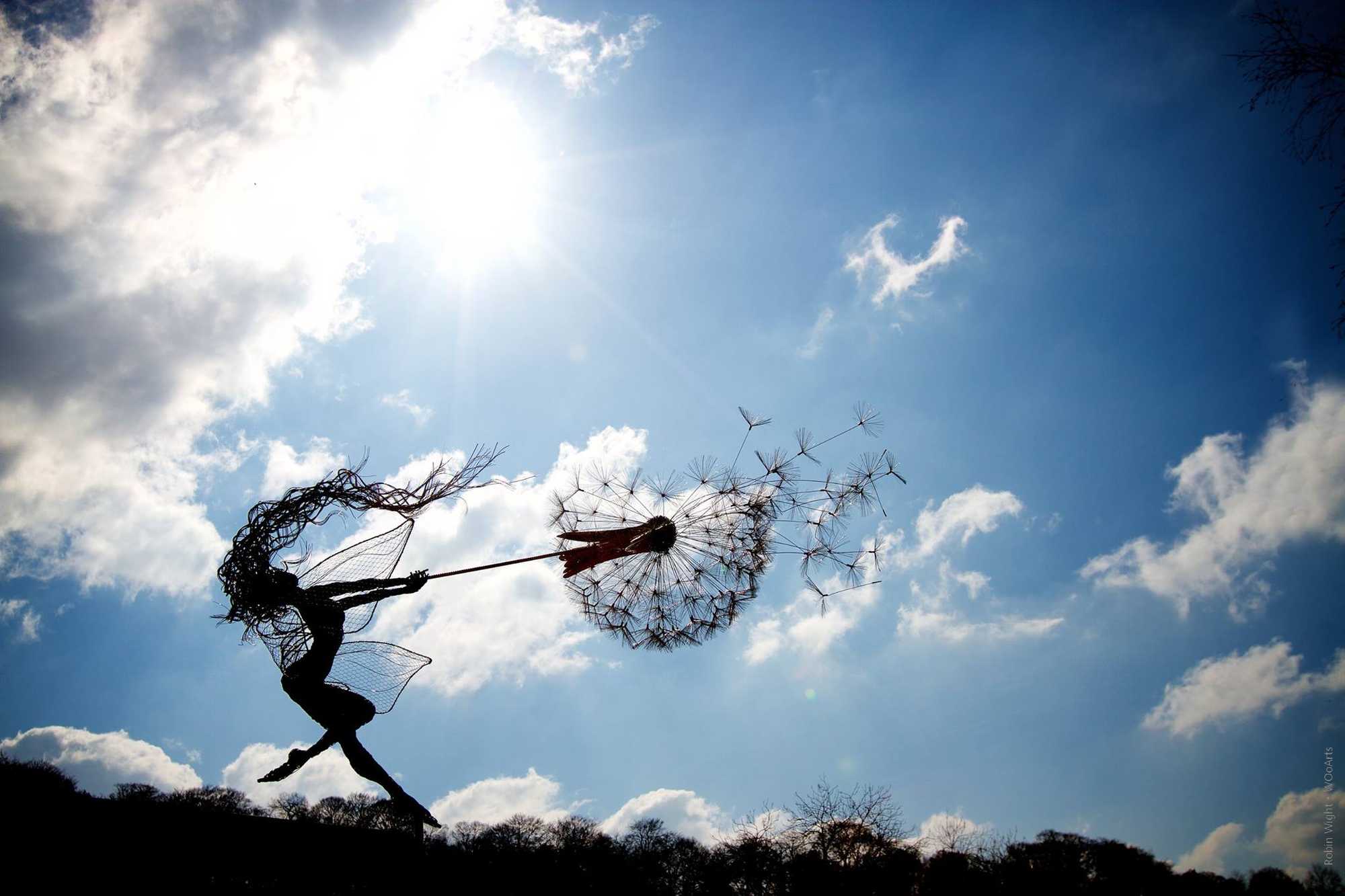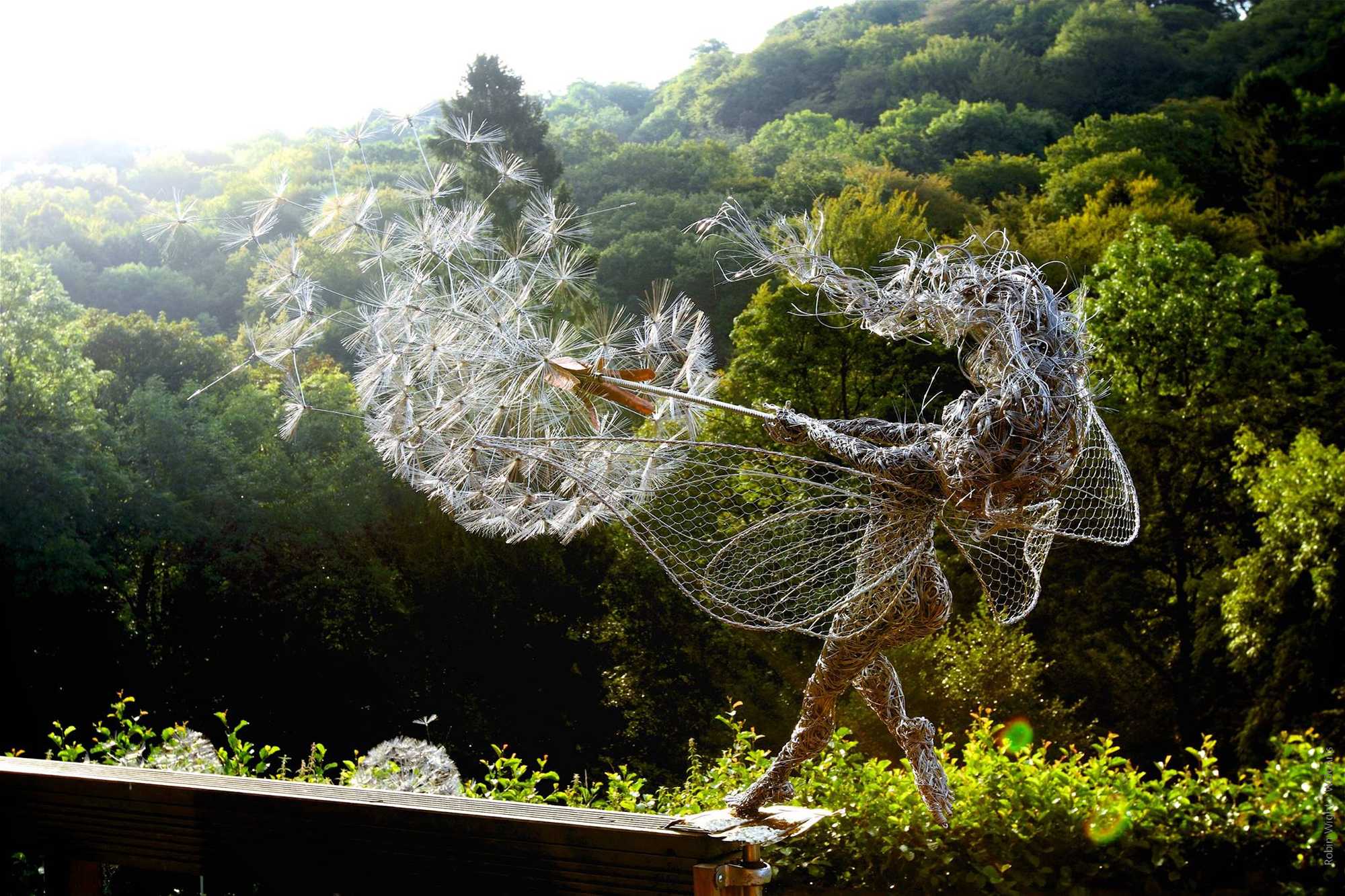Capturing Magic in Wire: The Enchanting Sculptures of Robin Wight
As of my last knowledge update in January 2022, Robin Wight is a contemporary British sculptor known for his mesmerizing wire sculptures. These ethereal and dynamic creations, often featuring fantastical and mythical themes, have captured the imagination of art enthusiasts worldwide.
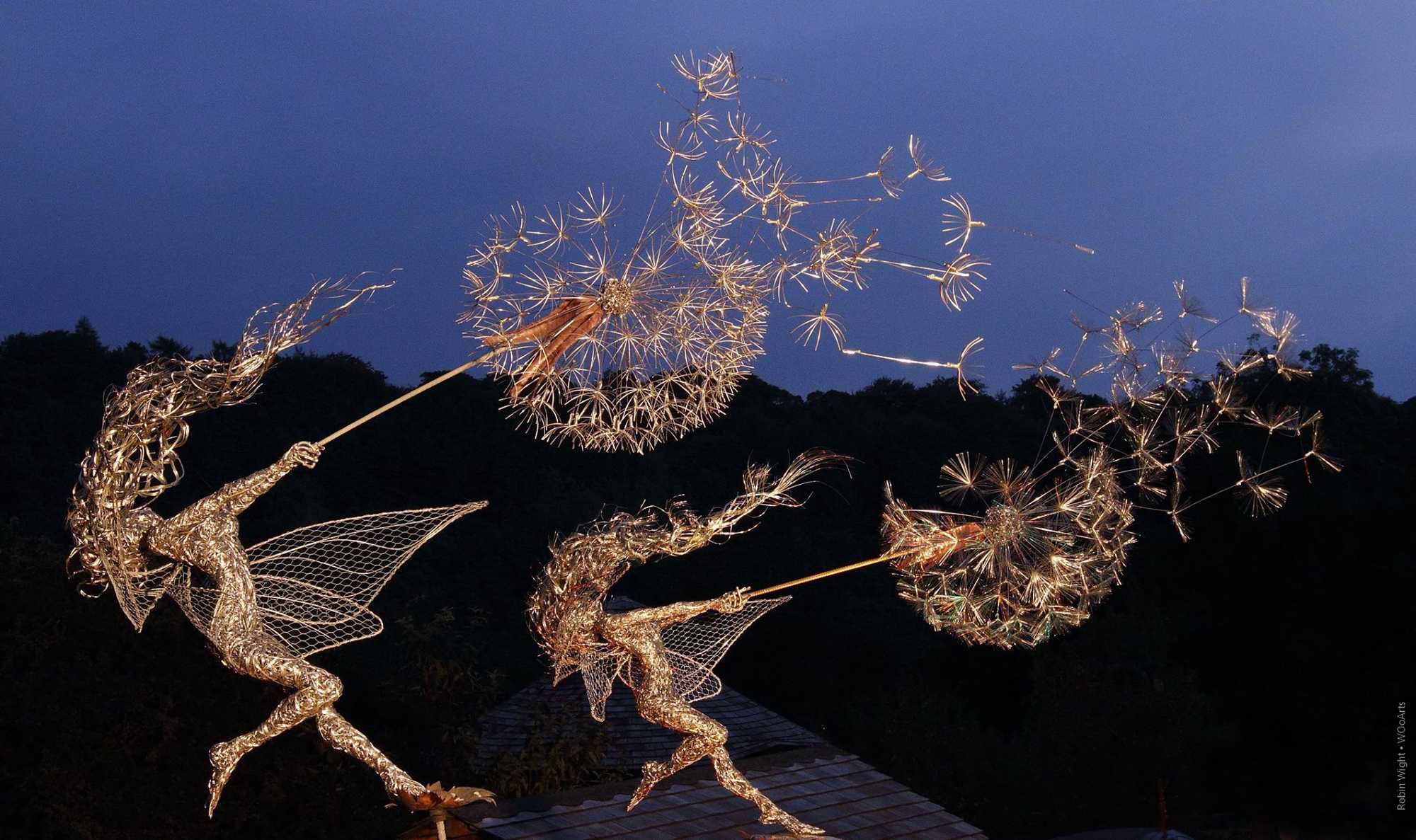
Early Life and Artistic Beginnings: Born in 1953, Robin Wight’s journey into the world of art took a unique trajectory. While his background includes a degree in Engineering and a career in the business world, Wight’s true passion for art found expression later in life. His transition from the corporate world to sculpting reflects a profound commitment to pursuing one’s artistic calling.

Wire Sculptures – A Unique Medium: Wight’s signature medium is stainless steel wire, and he employs a meticulous and intricate process to bring his sculptures to life. The wire serves as both the skeleton and skin of his creations, allowing for transparency and a sense of weightlessness in the final pieces.
Themes and Inspirations: Wight’s sculptures often draw inspiration from nature, mythology, and the fantastical. One of his most iconic series features enchanting winged figures suspended in mid-air, suggesting a moment of magical transcendence. These sculptures evoke a sense of wonder and fantasy, capturing the delicate balance between strength and fragility.
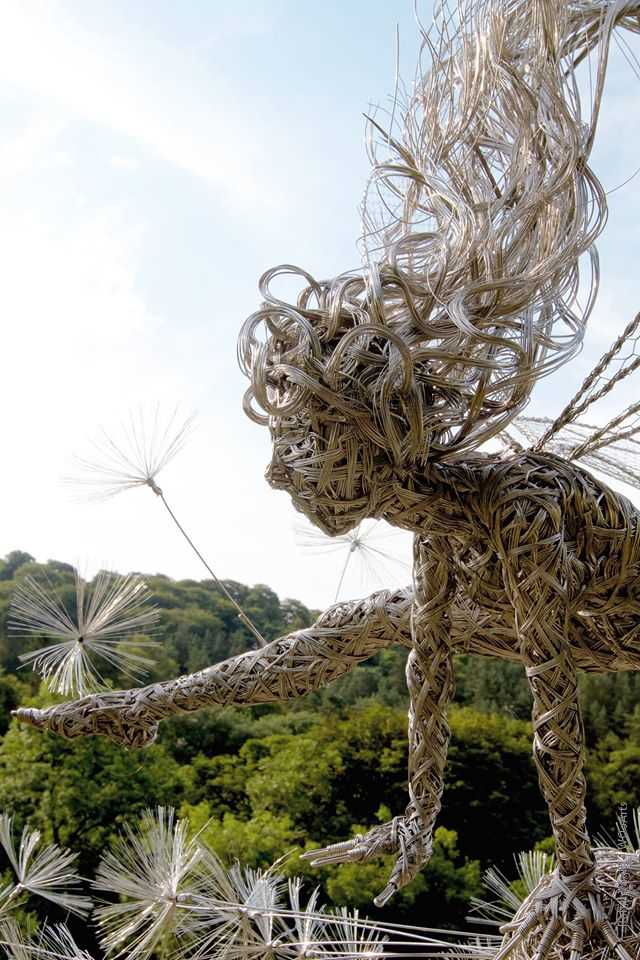
Craftsmanship and Technique: The craftsmanship in Wight’s work is exceptional. Each wire is carefully shaped and arranged to convey movement, emotion, and intricate details. The transparency of the medium adds a layer of complexity, allowing viewers to appreciate the interplay of light and shadow within the sculptures.
Exhibitions and Public Installations: While individual pieces of Wight’s work have been collected by private collectors, he has also exhibited in various galleries and participated in public installations. The larger-than-life scale of some sculptures lends itself well to outdoor spaces, creating a captivating interaction between art and nature.
Global Recognition: Robin Wight’s sculptures have gained international acclaim, and his work has been featured in numerous publications and exhibitions. His ability to infuse life and movement into static wire structures has earned him a distinguished place in the realm of contemporary sculpture.
Evoking Emotion and Imagination: Beyond the technical brilliance, Wight’s sculptures possess a unique ability to evoke emotion and stir the imagination. Whether capturing the whimsy of fairytale creatures or the grace of celestial beings, each piece invites viewers into a realm where reality and fantasy intertwine.
In conclusion, Robin Wight’s wire sculptures stand as a testament to the transformative power of art. Through his unique medium and visionary approach, he has not only crafted beautiful pieces but also created a bridge between the tangible and the fantastical, inviting audiences to experience the magic of his imagination. Keep in mind that developments in an artist’s career may have occurred since my last update in January 2022, so it’s advisable to check more recent sources for the latest information on Robin Wight and his artistic journey.
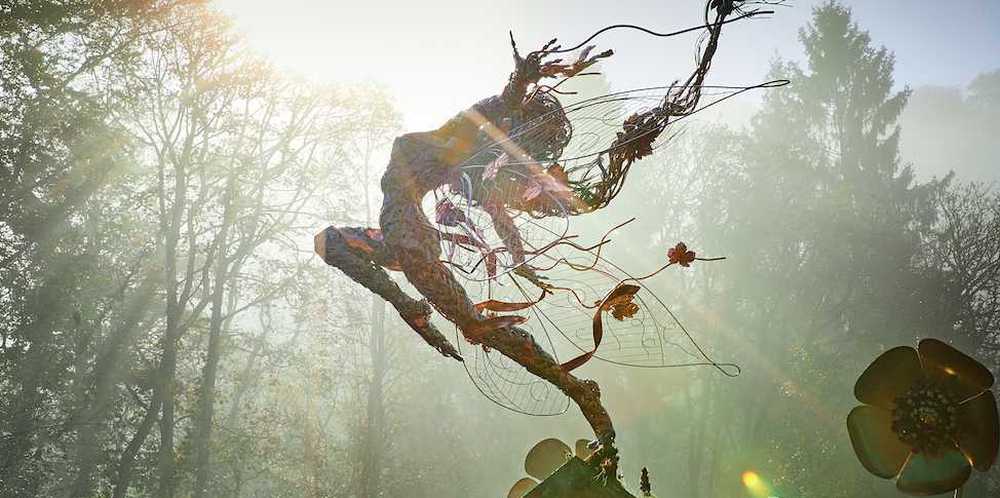
My name is Robin Wight and I’m the artist who creates the wire fairies and founded FantasyWire. I was born in 1960, the son of an engineer.
I’ve always been creative and first mastered pencil drawing at school which I continue to enjoy, but switched to iPad as a medium in recent years. Art and engineering have meant that throughout my life I have created all manner of things in all sorts of materials.
My interest in 3D / sculpture developed when our children were very small and I used to build elaborate sand sculptures on beach holidays. In 2009 we moved to the middle of a nature reserve where fairies ought to exist and things changed.
At Christmas 2009, I received a new camera. While in the woods, learning how to use it, I took a photo of the light streaming through the trees on to some moss covered rocks. It was only later when I unloaded the camera and examined the images that I noticed what looks like a fairy in the tree. I’m sure it must be just an illusion, like seeing a rabbit shape in the clouds, but it does look convincingly like a fairy.
I live in a place where fairies ought to exist, so maybe…
Contemporary Fairies
Back in the 16th century, it was very common for people to believe in fairies, but they didn’t think they were eight inches tall, necessarily good or even sporting wings. For instance, if a baby was born less than perfect, people referred to them as changelings and claimed that fairies had replaced them. Fairies were magical but were feared as more malevolent beings.
In was in the early 1900s, probably as a result of the Peter Pan story, that the pretty little friendly female magic became the common image of a fairy. It was about the same time that the Cottingley fairy photos hit the headlines and took the world by storm. This new image persisted for some time and when Disney released the animated film of Peter Pan in 1953, Tinkerbell cemented that image as the de-facto description of a fairy into the
worlds psyche.
I’m happy to go along with the magical female bit and even the force for good, but I’d like to promote a new, more contemporary image of a fairy: Fairies can be delicate, feminine with whimsical character traits who collect dandelion seeds and grant wishes for humans. I love making these characters, but they can also be strong sexy action heroes that exist to protect the world from evil.
How did it all start?
The most frequent question I get asked is how did it all start: In 2010 I was mending a fence. I was screwing up some old wire to throw away when I had the thought that wire is quite strong but malleable and could possibly be used to sculpt with. Because I live in the middle of a wood, a fairy for the bottom of the garden seemed like a good subject to start with. The fairy on the left is my very first fairy made from galvanised fence wire.
By 2012 I was selling a few locally and for fun, we created a fairy trail in the woods for the village festival. We handed out trail maps so families could try and find them all. The fairy trail got noticed by Amanda Dawson from Trentham Gardens (a good friend today) and within a few days, we were recreating the trail in their gardens.
I still work with the Trentham Estate and the Trentham Fairy Trail now consists of a mixture of those very early fence wire fairies which are permanent residents, alongside an exhibition of some of my latest works.
I live in a place where fairies ought to exist and it inspires me. I think of many ideas but can agonise for weeks over the design and engineering challenges of how to physically create them. Only a few ideas turn into sketches and even fewer get created as actual fairies. It’s like trying to bring a fairy to life in my mind. Each one has to have her own story and her own personality.
Making the actual wire fairy is only the start. Once the sculpture is finished, I have to set the scene for her to enter the world. I have to install / position her, wait for the right weather conditions and lighting. I get up and the crack of dawn to take photographs. 2D images don’t always do a 3D work any favours, so I came up with the idea of videos. I chose appropriate music to match her personality, then shoot a video to suit the atmosphere I’m trying to create. I edit it to make it dramatic, suspenseful, peaceful or whimsical. Once I have all of these elements, I then work out how to introduce her to the world. I sometimes tease the audience which is a necessary step to manage and build expectations. All of this has to be conducted a bit like a magic trick where there’s the big reveal at the end. People are waiting to see the new fairy.
It’s stressful, I’m trying to get all the elements together while exposing myself to a potential fall each time if I don’t pull it off. It’s an adrenaline ride.
Over time and greatly helped by where I live, I’ve created a sort of fantasy world. Each character is different, yet they all seem to fit in this world and complement each other. Long term fans know each fairy by name and they step into this world with me every time I post on social media, what’s become known as a ”Fairy Fix”.
All of the above is my art. Wire sculpture is only a part of it. It’s the design, it’s photography, its videos, the world they occupy and most importantly, working out how to touch your imagination as it all requires you, the audience. My art is not wire sculpture, its the fusion of all these things.
source: Robin Wight website

